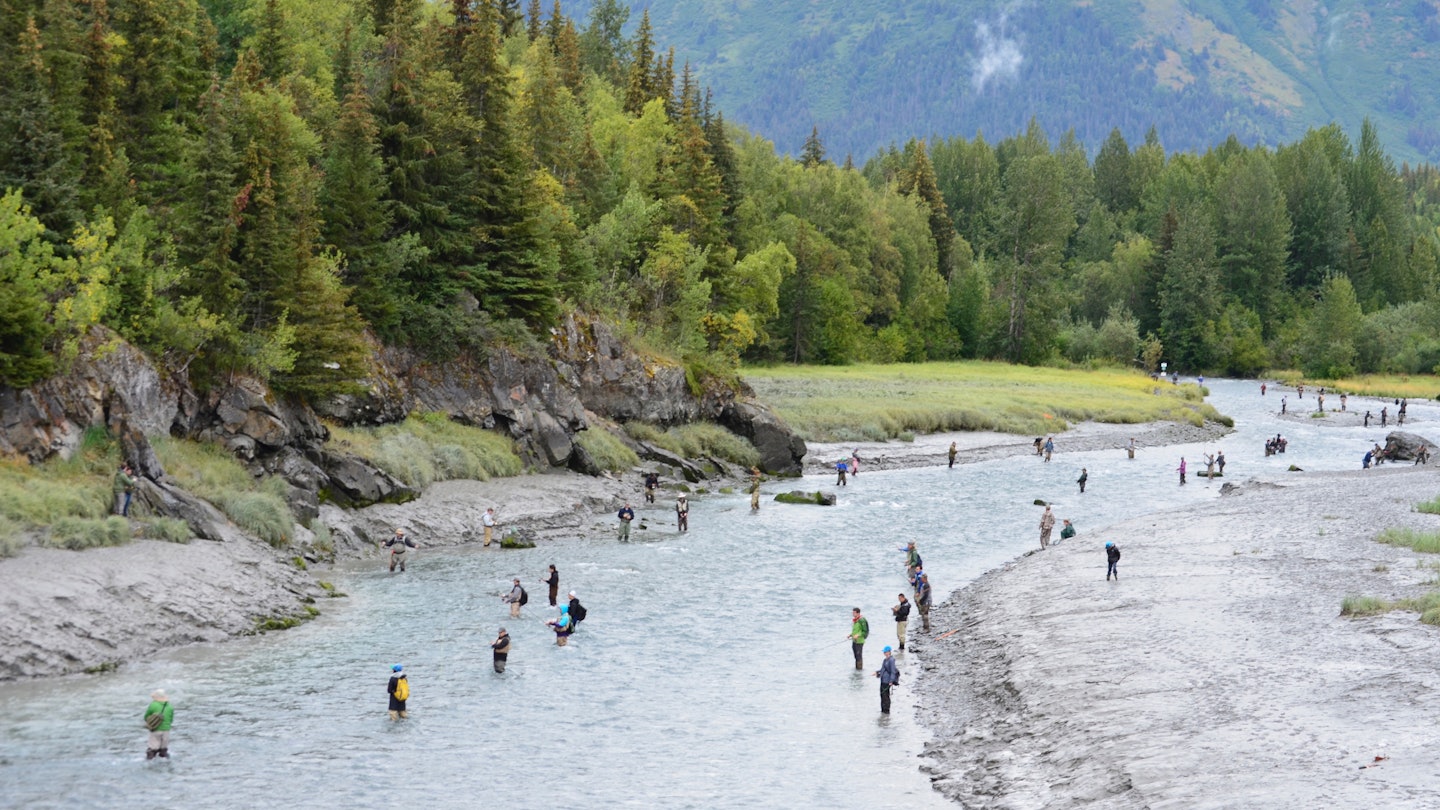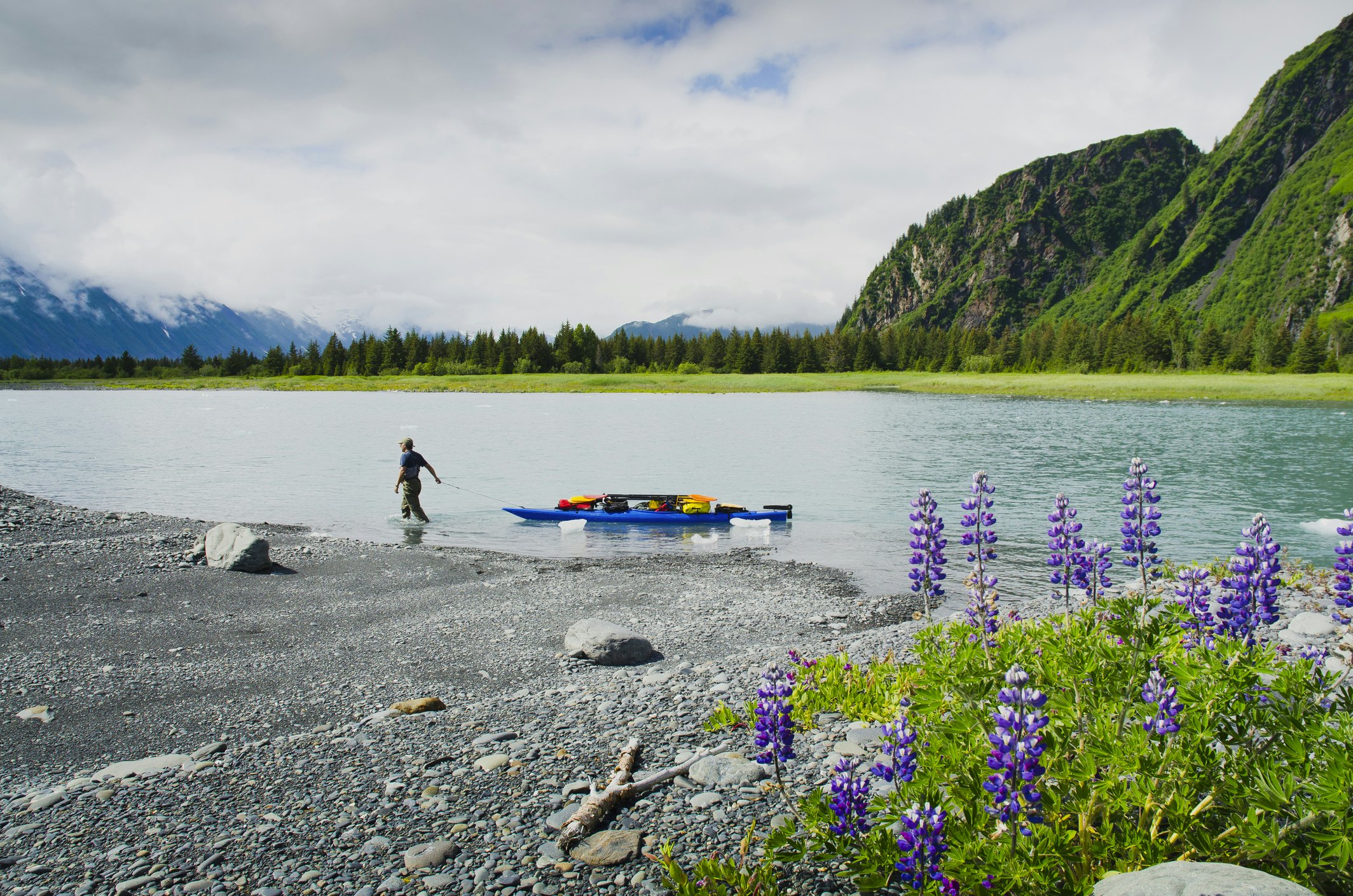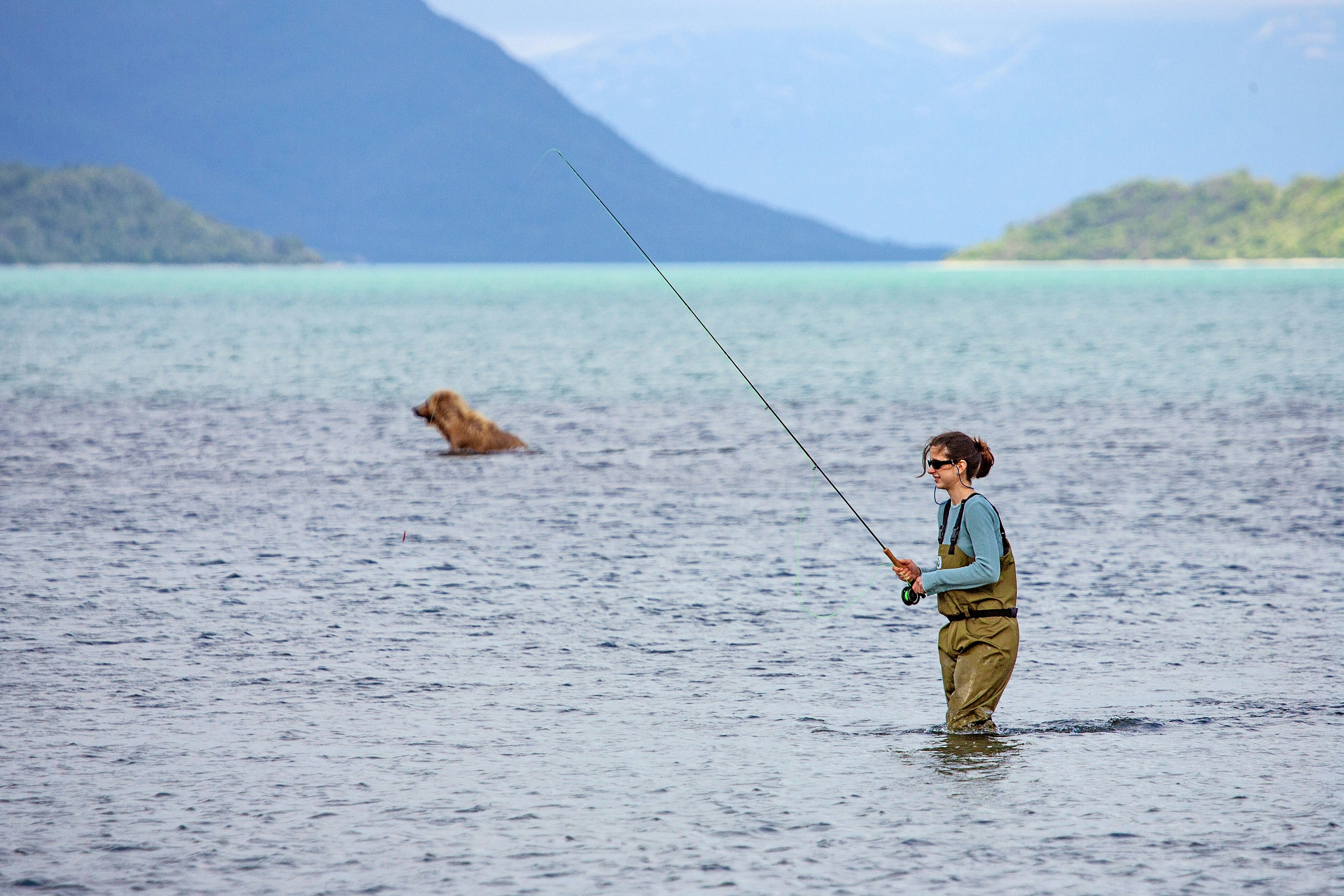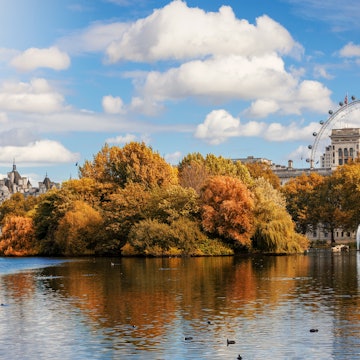

Bird Creek in the shadow of the Chugach Mountains is lined with fisherman hoping to catch silver salmon © Karen Timmons / Getty Images
For many Alaska visitors, the chance to drop a line in the briny depths of the ocean, or cast a fly rod upon a rushing river, is the reason they’ve traveled north – and for good reason. There is nothing quite like fresh fish – caught amid the stunning scenery of Alaska – consumed over a dinner table filled with tales of the day itself.
Alaska’s commercial fishing industry is its second-largest economic generator, with a wide variety of species found across the state. From mid-April to August, saltwater fishing vessels of varying sizes and shapes take to the sea and net or line-catch salmon, halibut, cod and other species for markets around the world. Sport fishing is also a huge business in Alaska, including the Arctic and Northwest regions, where species like Arctic char are considered a fly-fisher’s dream for their fight on a line.
For these reasons, you’ll need to consider the seasons, types of fishing and the most accessible locations for your fishing holiday. In a state with 3,000 rivers, three million lakes, and over 6,000 miles of coastline, the toughest part is deciding where to go.

What are the regulations for fishing in Alaska?
The Alaska Department of Fish and Game is the state’s overseeing agency for all things sport fishing, and it tightly controls where, when, and what species you can catch. Dividing the state into three regions (Southcentral, Interior, and Southeastern) the agency provides up-to-date listings of open and closed areas, and forecasts for salmon runs each spring, when many anglers are making plans for fishing trips.
All nonresidents aged 16 and older must purchase and carry a current fishing license, available either online or at retail outlets in just about every city. Additionally, those wanting to fish for king salmon must secure a stamp indicating this intention, which is added to your license. It must be noted here that the ADF&G does not take fishing without a license lightly: officers are constantly patrolling shorelines and salt waterways – and fines for non-licensed fishers are hefty.
Know your halibut from chinook
It behooves the fishing visitor to have an idea of what type of fish they’d like to catch while in Alaska. Those looking for salmon have the choice to fish in either saltwater near Whittier, Seward, Valdez or Homer and nearby environs; or in the rivers and streams flowing near these communities, but also in Anchorage and along the Southwest regional areas like Dillingham and Katmai National Park.
Know that the farther away from the road system one goes, the more expensive fishing will get, especially if you need a float plane to reach a river. Alaska's waters house five species of salmon: chum, sockeye, pink, chinook and coho. Each spawn at different times of year, beginning with chinook (also known as king salmon) in late spring.
Other freshwater fish include Arctic char, grayling and trout – the latter usually fished in September and October.
Saltwater species are abundant and accessible in any harbor community, but halibut are predominant in the community of Homer at the tip of the Kenai Peninsula. In fact it is known as the “halibut capital of the world” with fish hauled in here reaching 200 pounds in weight.

Best destinations for a DIY fishing trip
Cast a line into the river for world-class salmon fishing on the Kenai River near Cooper Landing.
Head out to deeper waters of Cook Inlet from Homer to fish for halibut.
Show up to Ship Creek in Anchorage and rent the entire kit to fish like a local.
Fly-fish the sparkling waters of the Little Tok River near the community of Tok, in the Yukon-Charley Rivers Preserve.
Try the family-friendly Bering Sea Crab Fisherman's Tour in Ketchikan for a look at the dangerous deep-sea crab industry.
Top tips for fishing in Juneau
Located along Alaska’s Inside Passage, Juneau is a great landing spot for Southeast fishers wanting to haul in a halibut or salmon. Charters depart from both downtown docks and Auke Bay about 15 miles from the city center.
Where to stay: Spend the night downtown at the Silverbow Inn and take in the charm of Alaska’s capital city.
Where to eat: For fresh seafood and local atmosphere, dine at the Hangar on the Wharf and watch floatplanes and ships come in and out.
What to expect in Seward
A popular destination for both cruise ship and independent travelers, Seward is also a hotspot for Anchorage residents looking for a weekend getaway. The calm waters of Resurrection Bay glean salmon, halibut, rockfish and cod and are great places for youngsters to learn the art of saltwater fishing.
Where to stay: Harbor 360 hotel sits right at the small boat harbor and offers a complimentary breakfast and access to downtown Seward activities, including fishing charters.
Where to eat: The Cookery in downtown Seward is small but its menu of fresh seafood and produce packs a delicious punch.
Visiting Valdez
This scenic Prince William Sound community lives hard by the sea, with daily salmon, halibut, and rockfish charters departing from its small boat harbor. Visit during the pink salmon run in early July and see the commercial purse seiners hauling up enormous nets of delicious fish.
Where to stay: Totem Hotel and Suites is a good option and a short distance from the downtown docks.
Where to eat: Try The Fat Mermaid for locally-sourced seafood right along the main street of Valdez and within walking distance to activities.

Remote fishing experiences in Alaska
If a remote fishing experience is on your bucket list and within budget, these lodges provide a truly immersive once-in-a-lifetime Alaska fishing trip.
Waterfall Resort
Located on scenic Prince of Wales Island in Southeast Alaska, this homey lodge is reached via a 45-minute floatplane ride from Ketchikan and offers pristine scenery while fishing for salmon in the calm waterways around the island. This former salmon cannery-turned fishing lodge is a wonderful choice for groups and families.
Alaska Sportsman’s Lodge
A luxury resort located near one of the most productive sockeye salmon waterways in Alaska, the Kvichak River, this lodge is for serious fishers, with daily guided forays into the wilderness to cast a line. Want to fly fish for trout? This is the place for that as well, with large fish regularly caught and released.
Tordrillo Lodge
Want to throw in some other adventures while still finding time to fish? This hidden lodge deep in the Tordrillo Mountains just an hour floatplane ride from Anchorage is pretty much perfect, with salmon and trout fishing intermingled with heli-skiing, hiking, and rafting.

Be bear aware
Alaska’s bears frequent the same fishing rivers and streams as humans, and they always have the right of way. If you are fishing without a guide, review the Alaska Department of Fish and Game rules and guidelines for fishers, and always keep an eye out for bears, especially if fishing in the long, dusky Alaska evening hours.
What to pack for your fishing trip to Alaska
If taking a charter vessel, dress for inclement weather and a near-constant day of wetness and fish scales. Wear rubber boots, or non-slip, close-toed shoes – and bring rain gear, a warm hat and gloves.
For those heading out into the open waters of Prince William Sound or the Gulf of Alaska, consider pre-dosing with an anti-seasickness medication or wearing a behind-the-ear patch to prevent nausea during the trip. Even the most ardent sailors sometimes feel the rolling ocean swells to be too much to manage without medicine.
For river fishers, waders are a must, and non-felt wading shoes.
Don’t have gear? There’s no need to worry: most guiding outfits provide everything you need for a comfortable experience.
Here is more expert advice to help you plan your trip to Alaska:
The best time to go to Alaska? Save this guide on when to visit.
Get around in Alaska with these transport tips.
Be sure to add these top experiences to your Alaska itinerary.
And make time for some epic road trips to the highlights in Alaska.
















